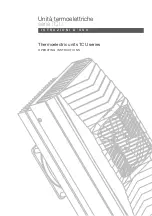
Introduction
Page 5
Features
The keypads feature:
A two-line by 20-character backlit LCD display (not available on i-RK01).
An illuminated four-
way switch (the “navigation key”), which is used to navigate
through menus (not available on i-RK01).
LEDs behind the navigation key, which show the fault status of the system.
A numeric keypad for entering access codes and keying in text.
Dedicated A, B, C and D keys, which can be programmed to set individual partitions
or part sets, or allocated to control outputs.
Keys for “yes”, “no”, menu and unset functions.
Hold-Up Alarm (HUA) keys.
An automatic timeout from the user menu.
The keys are backlit by LEDs within the keypad.
Supported keypads
The following keypads are supported:
i-kp01
Wired keypad with built-in proximity reader. (Requires firmware v2.0 or
above.)
i-RK01
One-way battery-powered radio keypad for setting/unsetting, with a built-in
proximity reader.
KEY-K01
Wired keypad only.
KEY-KP01
Wired keypad, with a built-in proximity reader, and terminals for a KEY-EP
external proximity reader.
KEY-KPZ01
Wired keypad, with built-in proximity reader, two on-board zones, one
programmable output, and terminals for a KEY-EP external proximity
reader.
KEY-RKPZ
Two-way battery-powered radio keypad, with built-in proximity reader and
two on-board zones. This keypad uses a base station connected to the
bus.
KEY-FKPZ
Wired flush-mount keypad, with built-in proximity reader, two on-board
zones, one programmable output, terminals for an external loudspeaker,
and terminals for a KEY-EP external proximity reader. The keypad is
available in a range of colours and finishes.
Note:
Do not install internal and external proximity readers closer than one meter to any
other type of proximity reader, otherwise the devices may not work correctly.
Engineering keypad
An engineering keypad is a modified keypad that can be plugged into a dedicated
connector on the control unit or on any expander. You can use an engineer keypad to
configure the system, rather than a keypad on the bus. An engineer keypad does not need
an address.
Before opening the control unit and plugging in an engineering keypad, enter your installer
code at another standard keypad. Once you have plugged in the engineering keypad,
other keypads are deactivated.
















































